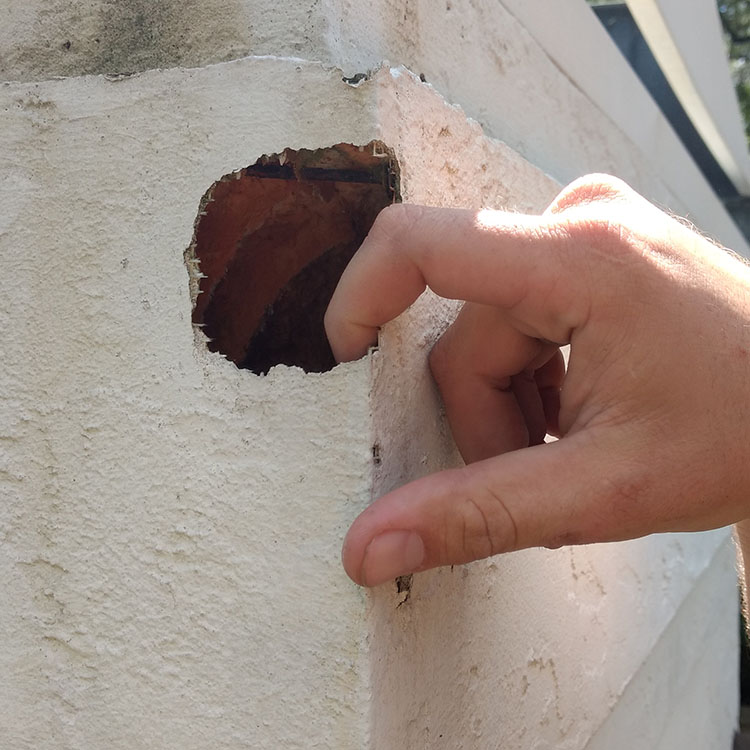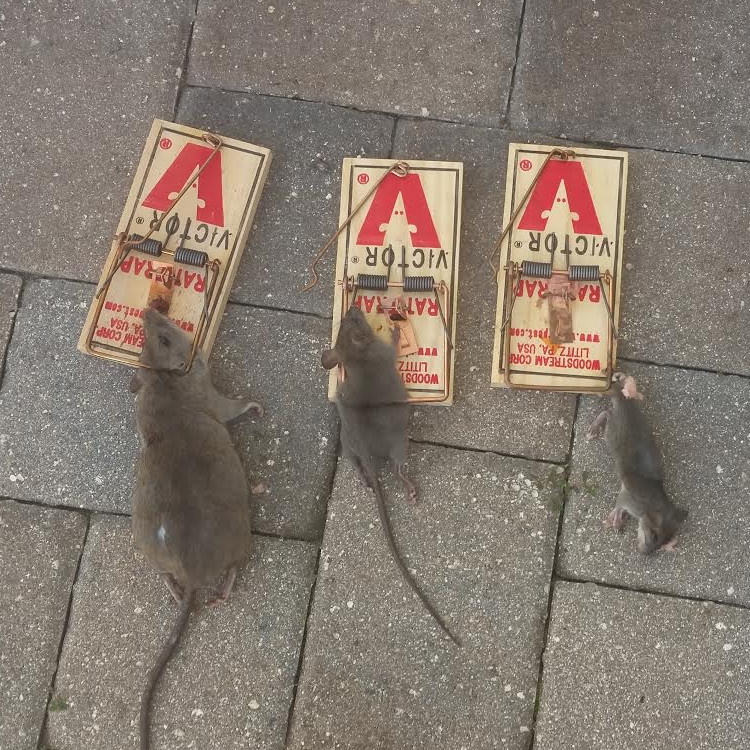Rat Removal
Rat removal services are usually performed by wildlife management professionals with years of experience, the right tools, and technical know-how to assist in the cleanup and repair of areas affected by rat infestation. If you are a do-it-yourself kind of person, this article will briefly describe some of the methods used by rat removal experts in our employ.
Take a Look Around
Our technicians perform a thorough routine inspection of the property to identify the source of the rat infestation, provide advice on how to discourage rats from entering your home, and how to make sure you don't have a rat problem in the future. Once the inspection is complete, they will start do set traps and make repairs to damaged or vulnerable areas of the home that rats are using as entrance points.

Locating Damage from Rats
Over time, your home will need to see repairs from the damage caused by wildlife in your local area. Few creatures are more destructive once they are in your home than rats. Not only do these creatures gnaw and chew and bite their way into the home, they continue this behavior almsot compulsively once they are inside. Rats like to chew on electrical wires, baseboards and moulding, pipe insulation, PVC, exposed wood of any kind, plastic siding, and much, much more. Almost as damaging as their teeth is their feces, which not only causes a strong odor in your home, but can ruin ceilings and insulation.
Making Necessary Repairs to Exclude Rats
Before you begin trapping, make sure that the places where rats were entering your home are sealed. Your inspection should have helped you locate these areas, and the tools and supplies you will need to perform the exclusion can be found at your local hardware or home improvement store. Making repairs ahead of trapping will ensure that no new rats enter your home during the trapping process–seemingly creating a never-ending rat problem.

Setting and Baiting Rat Kill Traps
Set your traps in areas of high rat activity. If you hide your traps outside of their path of travel, the rats may never smell the bait and take it. Always use kill traps in order to kill these creatures humanely and avoid complications of releasing rats. Rats are not a protected species or endandgered in any way. It is entirely safe and humane to use kill traps because they sever the spine immediately upon contact. Be sure to dispose of dead rats properly for your city, county, and state.
